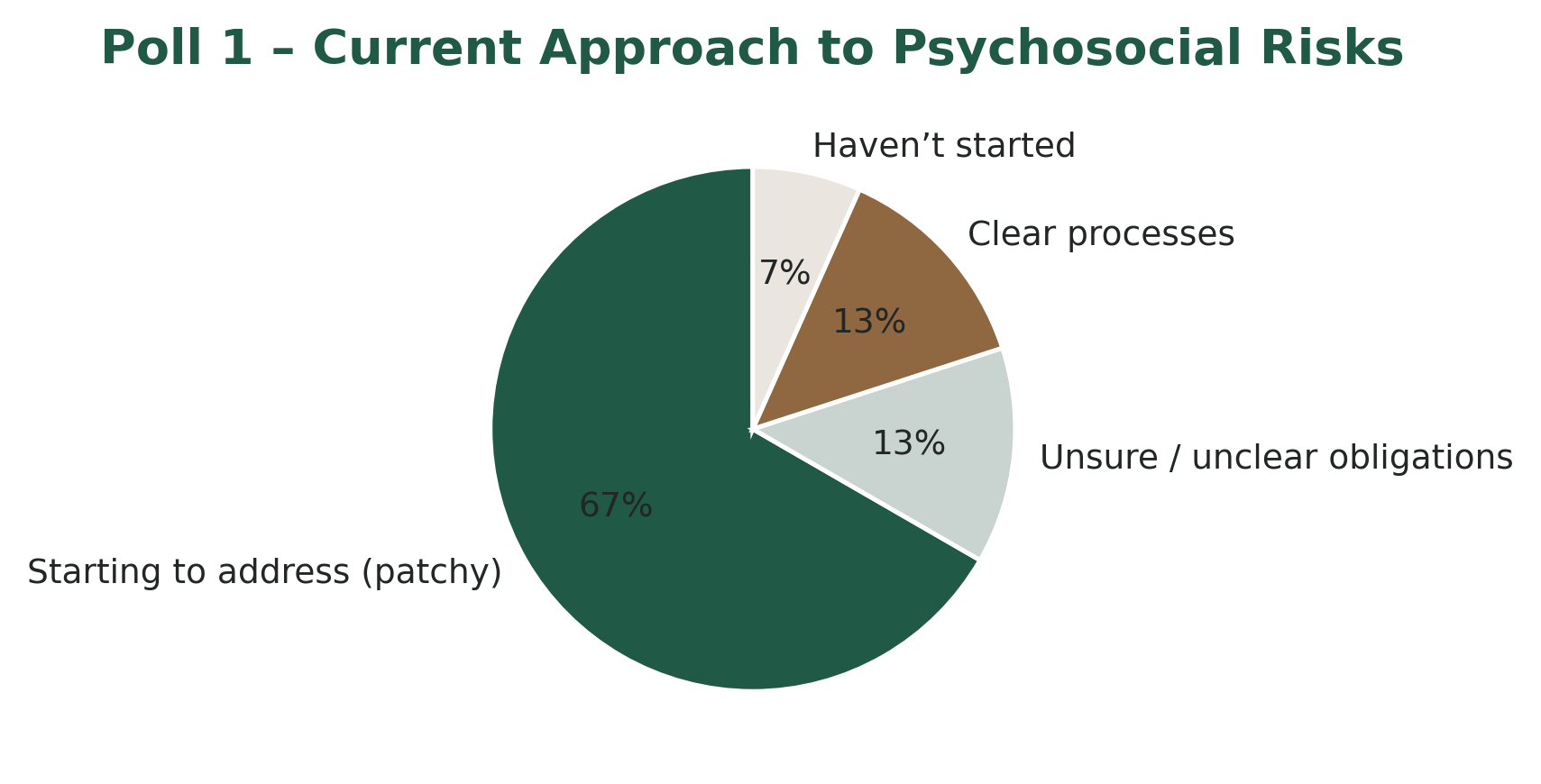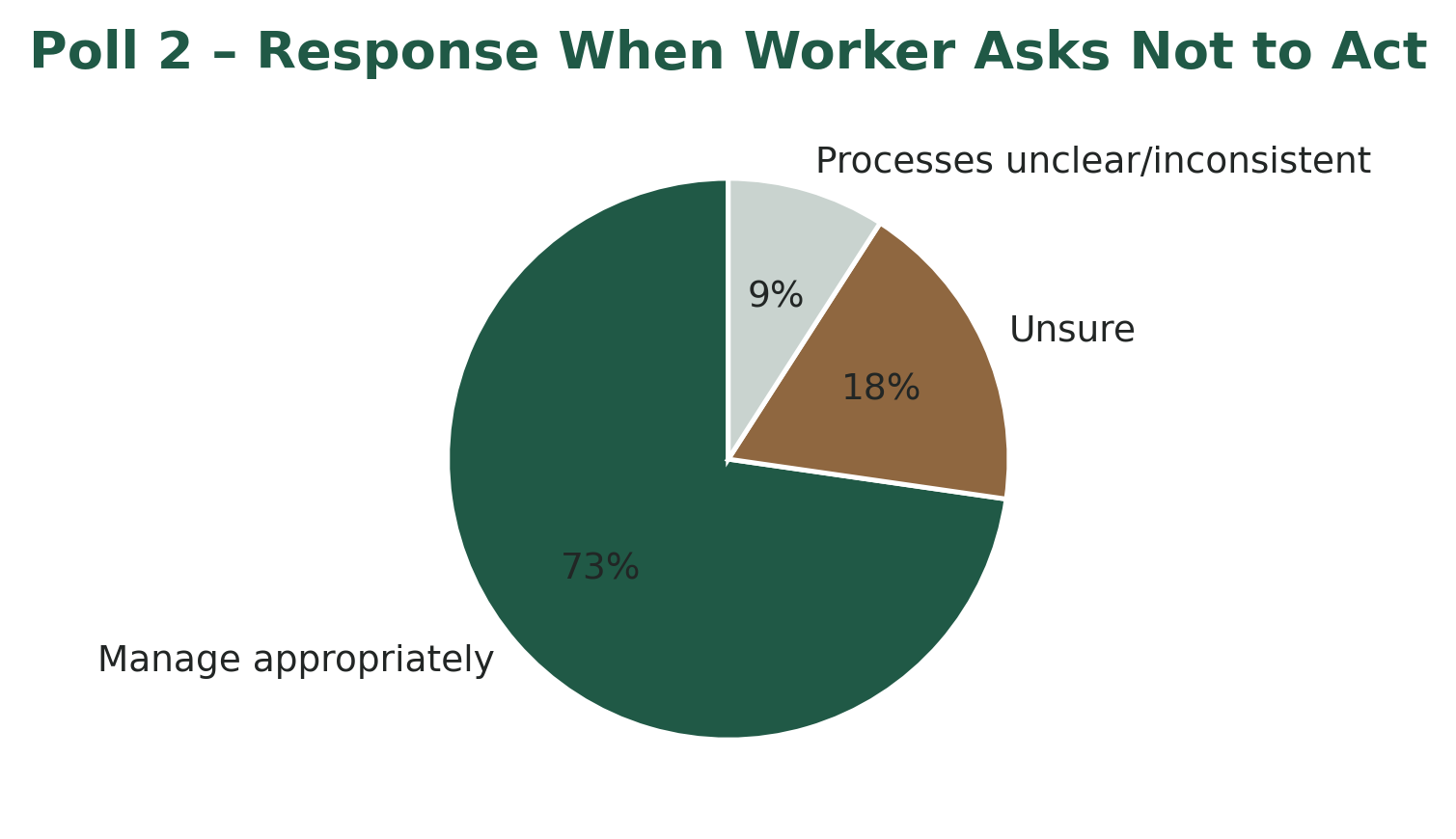So... What are Businesses Really Doing About Psychosocial Risks?
Further to our recent Something’s Changed… newsletter, we ran a few quick polls during the webinar to see where businesses are really at when it comes to managing psychosocial risks.
The results were telling, and very familiar.
Most organisations get stuck in the middle, unsure of what’s required or where to start. Risk Collective helps bridge the gap from uncertainty to confident action.
What We Asked
To get a pulse check on where businesses are right now, we asked three simple questions during our recent webinar:
How would you describe your business’s current approach to psychosocial risks?
If a worker reported a psychosocial risk (like inappropriate workplace behaviour) but asked you not to take any further action, how would you respond?
After today’s session, which area do you most want to strengthen in your business?
What it shows: Most businesses are taking steps to address psychosocial risks, but not consistently. Two-thirds of respondents said they’re “starting to address them, but it’s patchy,” while only a small portion reported clear, established processes. A few admitted they were unsure of their obligations or hadn’t started at all.
What it tells us: Awareness is growing, but structure hasn’t caught up yet. Many businesses know this matters, but they’re still finding their footing in turning good intent into formal systems.
What it shows: Almost three-quarters said they would take action appropriately, even if the worker asked them not to, showing strong intent to protect psychological safety. However, nearly one in four respondents were unsure or said their processes were inconsistent.
What it tells us: Leaders want to do the right thing, but uncertainty around when and how to act still exists. It highlights the need for clearer procedures and training to guide consistent responses.
What it shows: The top priorities were building clearer processes to manage psychosocial risks (42 %) and embedding psychosocial risk checks into day-to-day operations (33 %). Others focused on supporting leaders and staff with training and resources (17 %) or improving how issues are handled when raised (8 %).
What it tells us: Businesses are ready to move beyond awareness into action. The emphasis is now on building structure, embedding risk management into everyday work, and strengthening capability, all signs that the conversation has shifted from “what” to “how.”
Where to From Here
These insights mirror what we’re seeing across industries: awareness has lifted, but structure hasn’t caught up. And one of the biggest gaps we continue to see, even in well-intentioned businesses, is consultation with the workforce. It’s not enough to assess risks behind closed doors; meaningful two-way consultation is what turns policies into practice.
That’s the opportunity.
Psychosocial risk management doesn’t have to be complicated… it just needs to be intentional, consistent, and built into how your business already operates.
Where Risk Collective Comes In
If you’d like to see how other organisations are closing those gaps, from consultation to practical controls, we’re happy to share what’s working best right now.



